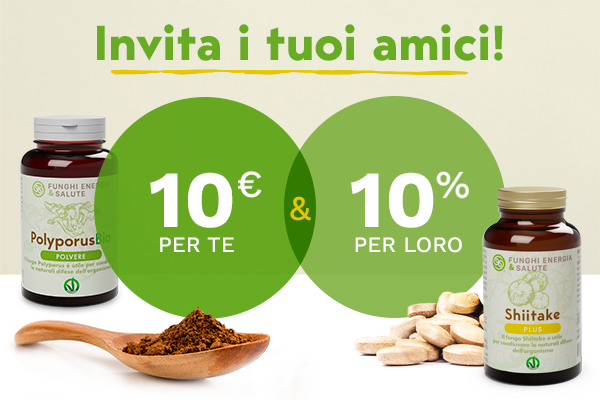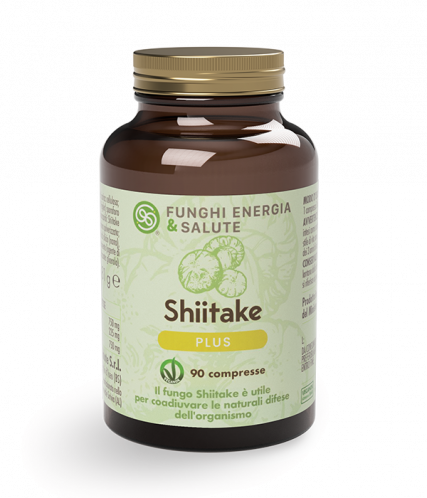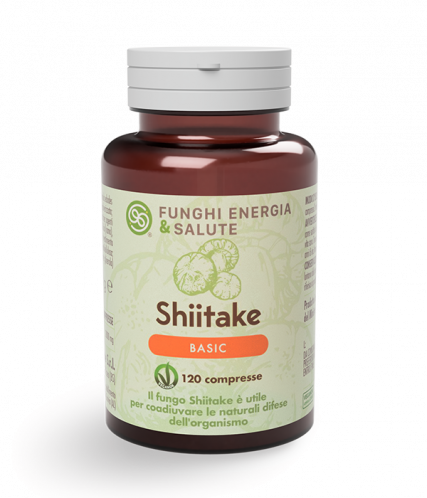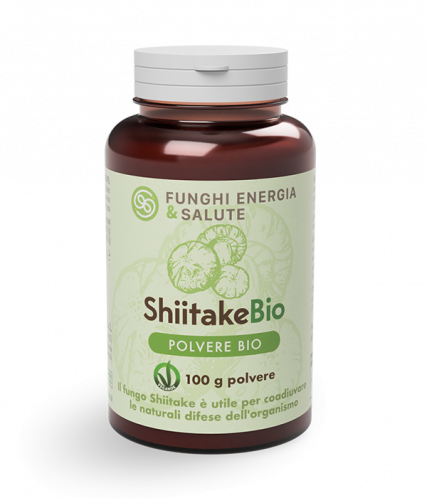Certified Natural products veganOK
030 9881073 Monday to Friday from 09:00 to 17:30
Toggle Nav 



Skip to Content
Language
EN
How can we help you?
Search
Subscribe to the Newsletter
to get immediately a discount code
on your first purchase
to get immediately a discount code
on your first purchase
Shiitake
- Home
- Shiitake
Shiitake
In modern times
Why is healthy and strong bacterial flora important?
The health of our intestine is fundamental for three reasons:
- it counteracts bloating,
- it improves the digestion,
- it strengthens the immune system.
If toxins and impurities decrease, it is more difficult for them to cross the intestinal walls and enter the circulation. This beneficial action prevents a series of problems from occurring, such as leaky gut syndrome and other local and general pathologies.
Shiitake (Lentinus edodes), in this sense, is useful for strengthening the intestine, cleaning the skin of acne and strengthening the immune system.
Useful in case of flu, cold and respiratory tract diseases, this Medicinal Mushroom counteracts the formation of dental plaque because it prevents the bacteria responsible for its formation from colonizing the mouth; consequently it is useful in case of tartar, tooth decay, gingivitis and abscesses.
Ancient tradition
In 1500 China, in the Ming era, Shiitake was already a well-known mushroom, used both in cooking and in medicine. In fact, it was considered a delicious dish and a valid remedy for diseases of the intestine, respiratory tract, liver and bones.
This Medicinal Mushroom was also used as a panacea against the characteristic phenomena of old age and to increase energy.
Over the centuries it has been used to treat flu, fever, bronchitis, cough, allergies and tooth problems.
Mycology
In 1878 the English botanist Miles Joseph Berkeley called this species "Lentinus", due to its similarity to the shape of a lens. The name of this Medicinal Mushroom actually derives from the Japanese terms “shii”, oak, and “take”, mushroom. Its literal meaning, therefore, is "mushroom that grows on oaks": it is easily found in the woods of these old trees at low temperatures.
It is also a mushroom appreciated in cooking and can be easily purchased in stores.
Chemical compounds
In Shiitake there are several active ingredients, in particular:
- beta-glucans, powerful immune-stimulant and antiviral agents. The most important is lentinan, a drug authorized in 1976 by the Japanese Ministry of Health, routinely used in hospitals in the country for its recognized efficacy against viruses and bacteria;
- oxalic acid which, like beta-glucans, has an anti-bacterial effect;
- Ac2P, a polysaccharide similar to beta-glucans, which inhibits the replication of some viruses;
- terpenoids, essential oils that enhance immunity;
- trehalose, a sugar that offers excellent prebiotic nourishment for intestinal lactic acid bacteria and that strengthens the bacterial flora of the intestine;
- vitamin D2 and ergosterol, which promote the mineralization of bones and teeth;
- antioxidants - including super-oxide dismutase (SOD), useful against free radicals, harmful molecules that lead to various diseases;
- enzymes that aid digestion and many vital processes in cells;
- erythadenine, a mildly lipid-lowering substance, which slightly reduces total cholesterol.
Bibliography
- Bae EA, Kim DH, Han MJ. (1997): “Effect of Lentinus edodes on the growth of intestinal lactic acid bacteria.” Arch Pharmac Res, 20: 443-447.
- Ciric L, Pratten J, Wilson M, Spratt D. (2010): “Development of a novel multi-triplex qPCR method for the assessment of bacterial community structure in oral populations.” Environmental Microbiology Reports, 2(6): 770- 774.
- Ciric L, Tymon A, Zaura E, Lingström P,Stauder M, Papetti A, Signoretto C, Pratten J, Wilson M, Spratt D. (2011): “In vitro assessment of Shiitake mushroom (Lentinus edodes) extract for its antigingivitis activity.” J Biomed Biotechnol, 507908.
- Hobbs C. (2000): “Medicinal value of Lentinus edodes (Berk.) Sing. A literature review.” International Journal of Medicinal Mushrooms, 2: 287-302.
- Kuznetsov OIU, Mil’kova EV, Sosnina AE, Sotnikova NIU. (2004): “Anti-microbial action of Lentinus edodes juice on human microflora.” Zhurnal mikrobiologii, epidemiologii, i immunobiologii, (1): 80-82.
- Mizuno M, Nishitani Y, Hashimoto T, Kanazawa K. (2009): “Different suppressive effects of fucoidan and lentinan on IL-8 mRNA expression in in vitro gut inflammation.” Bioscience, biotechnology, and biochemistry, 73(10): 2324- 2325.
- Shouji N. (2000): “Anticaries effect of a component from Shiitake (an edible mushroom).” Caries Res, 34: 94-98.
- Signoretto C, Burlacchini G, Marchi A, Grillenzoni M , Cavalleri G, Ciric L, Lingström P, Pezzati E, Daglia M, Zaura E, Pratten J, Spratt DA, Wilson M, Canepari P. (2011): “Testing a low molecular mass fraction of a mushroom (Lentinus edodes) extract formulated as an oral rinse in a cohort of volunteers.” Journal of Biomedicine and Biotechnology, 7:17.
- Wasser SP. (2005): “Shiitake (Lentinus edodes).” Encyclopedia of dietary supplements, Marcel Dekker, New York (USA). pp. 653-664.
- Yamada J, Hamuro J, Hatanaka H, Hamabata K, Kinoshita S. (2007): “Alleviation of seasonal allergic sintomi with superfine β-1, 3- glucan: a random- ized study.” Journal of allergy and clinical immunology, 119(5): 1119-1126.
- Yamamoto Y, Shirono H, Kono K, Ohashi Y. (1997): “Immunopotentiating Activity of the Water-soluble Lignin Rich Fraction Prepared from LEM -The Extract of the Solid Culture Medium of Lentinus edodes Mycelia-.” Bioscience, biotechnology, and biochemistry, 61(11): 1909-12.
- Zaura E, Buijs MJ, Hoogenkamp MA, Ciric L, Papetti A, Signo- retto C, Stauder M, Lingström P, Pratten J, Spratt DA, Wilson M. (2011): “The effects of fractions from Shiitake mushroom on composition and cariogenicity of dental plaque microcosms in an in vitro caries model.” Journal of Biomedicine and Biotechnology, 10: 1-10.




